I looked at a house last week for a realtor (yeah… I know…) that has a lot of water problems. Dirt crawl space that’s very wet with a bit of standing water near a couple of the piers, very wet ground all around the place. There are no gutters so roof water hits the ground about 2 feet from the walls. There’s a hill rising behind the house for at least a couple hundred feet (wooded, so I can’t see how far) and possibly worst of all, there’s a very large pond about 60 feet away to one side of the place. It’s rained a little here in the past month but not much.
The uphill exposure and the roof water issue can be solved fairly easily with a french drain and gutters with tight lines for downspouts. The pond is what bothers me. The level of the water is above the crawl space level by a few feet. My concern is that the proximity of this water is keeping the soil saturated, and that no matter what drainage work is done the soil will be wet. Soil here tends to be fairly well-draining with no clay.
I know you can’t see it from where you are, but what does this sound like? I know this needs an engineer (soils?) to consult on it and design the solution, but I’m curious to hear opinions.
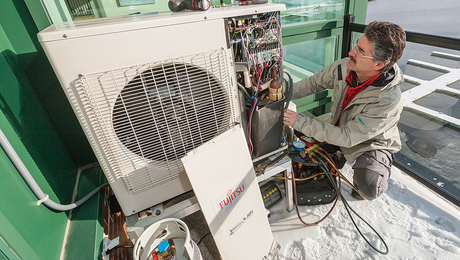
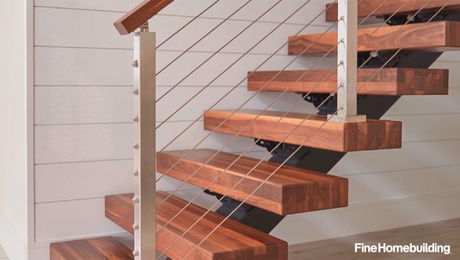
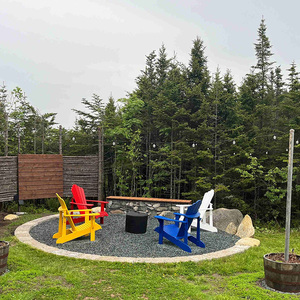
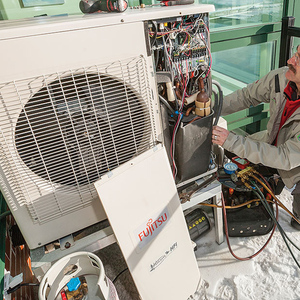
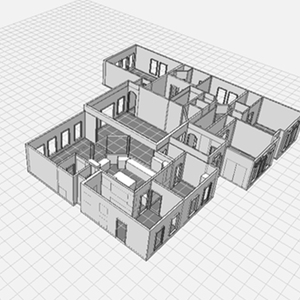














Replies
I have a pond 70-80 feet from the house. Here, on my clay soils, it is an indication of ground water level for the most part. water is no more likely to leak from it to myhouse than from the house to it, You could have a hole dug halfway between and let it perk for a day or two and use a level to see where the water level lies
The other Q in my mind though, is if this is not in clay soil, how does it hold water. Is there a liner.
Welcome to the
Taunton University of Knowledge FHB Campus at Breaktime.
where ...
Excellence is its own reward!
>The other Q in my mind though, is if this is not in clay soil, how does it hold water. >Is there a liner
Your question piffing - we build lakes frequently and in one area where we work there is a river that has flipped course enough times that the sand bed is fairly deep. Some work in the area you never hit clay, one job we got into and discovered a peat layer.
We did a big lake a few years ago and there was no clay on the site we hit to build a liner. So we did this big EPDM rubber liner (about 6 acre lake). After the lake filled sections of it expanded above the water line where air infiltrated under it and it had a loch-ness sort of look. So the engineering solution has been period deer slugs to keep the air from building up.
remodeler
LOL
I've seen my screen name mis-spelled a lot of ways but this is a new one to me
"Your question piffing"
Wouldn't piffing be a verb?
I've got to think of a definition and add it to the Breaktimers vocabulary
Sounds like a fun game.
Welcome to the Taunton University of Knowledge FHB Campus at Breaktime. where ... Excellence is its own reward!
I would think if the soil is very well draining then the entire area around the pond would be saturated. Off the top of my head I can't think of a solution. Sounds like a bad place to have built a house.
I only have limited knowledge of pond construction, but if you have only well drained soil, wouldn't the pond drain too?
My guess is that clay was imported to line the pond, in order for it to hold water. Unless you have obviouse signs of the pond leaking, I would suspect the crawl space water is from the other conditions you described.
Piffens perk hole would work. So would a couple of elevation shots at grade at the crawl space and water level in the pond. Equal elevation could indicate you could have a problem. Higher level at the pond would mean it is not "seeking its own level" through a leak.
Jst some SWAGs on my part :-)
Dave
Ponds can be pretty water tight if they're formed in good soils - Like the right kind of clay. But once they're full of water it's anyone's guess how watertight it is.
Your thoughts about gutters and "tight lines" sounds good. Hopefully you have a good downhill run so you can run the water to daylight.
I'm not sure when you say "french drains" if you mean just capturing the water from uphill and directing it away from the house? I certainly wouldn't stop there.
I'd suggest digging up around the footings and put in drainage there, with plenty of gravel. If you can run the drains to daylight that would go a long way towards keeping the crawlspace dry.
Drugs cause amnesia...and other things I can't remember.
Just had one other thought pop into my head that I thought I'd throw out.
How about lowering the water level in the pond? Obviously that may not be an option if the pond is shallow or the owner is against the idea.
But it couldn't hurt.
Q: What's the difference between a lawyer and a trampoline?
A: You take your cleats off before jumping on the trampoline.
I don't know anything about the pond, except to say that the side facing the house appears to be an earthen dam rather than a natural formation--it's this nice, curved berm containing the pond on that side, about 5' high. No telling if it's lined. Without a topo map I couldn't say how much land lies above the pond and house, but the land rises to the south into heavy forest. The pond/house area could be catching a LOT of runoff, and/or it could be spring fed (there are some artesian wells around here).
The house is on a sloped site, maybe 10 degrees, and my thought was to cut in a horseshoe shaped french drain around the top and sides, with daylights at both ends below the house. Perf pipe and tight line for the downspouts could go in the same trench, which would be 24-36 deep and filled with drain rock wrapped in fabric, pipes inside the wrap. I think the trench would start flowing as it was being but.
I would run a parallel line for the gutters. With gutters you are going to be washing leaves and trash into the lines. If they ever clog then they would just be a source for pumping water back into the crawl space.
Also I would do some grading on the uphill side and put in a swhwale to direct the surface water around the house. But you still need the underground drains also. Might be springs in them their hills.
What you're suggesting would HAVE to help. Hard to say how much, of course.
Personally, I'd prefer to have the drain tile and gravel right down at footing level.
Bill Hartmann's point about running the gutters in a separate line is a good one. But it sounds like that's what you're planning on doing anyway.
You didn't mention the idea of lowering the pond water level. Is that an option?The beauty of the second amendment is that it will not be needed until they try to take it [Thomas Jefferson]
The perf pipe goes in the bottom of the trench on a thin bed of gravel. The tight line is separate until a point close to daylight where the two pipes wye together. Gravel and fabric burrito-wrap around the whole thing, shallow soil cap on top.
Pond belongs to a neighbor. The subject property line extend a few feet into the water. If they want to lower the pond then they'll have to hash that out. Ponds are desirable here... people go to great lengths to dig them... so the neighbor probably wants to keep it.
Ponds in IL question for Ron?
Did IL recently (last 10 years or so) start a program to provide incentives for ponds?When I left Spfld airport last week, there were more ponds than I ever remember seeing - 2-3 acre and up creek dammed ponds, not just the big potholes near overpasses. Thought maybe there were more if the state instituted some incentives to help with storm runoff situations following IL and Miss. River floding in mid 90's.
Yo Art -
There are no new programs for ponds that I know of. There always have been some cost sharing type things available, as long as you follow the government guidelines.
Dad looked into cost sharing when he wanted to repair the dam for a pond he owned. But what the government was going to require him to do would have cost more than doing what he wanted to do. (Even allowing for the 60% of the cost the government was going to pick up)
.
A few years ago, Dad built a couple of erosion control structures on his farm called "dry dams". (At least that's what they call it around here)
Basically you build a dam at the edge of a field where you have a big washout and erosion control problems. But instead of building the pond to hold water, you design it to drain out slowly.
Before you build the dam, you put the drain pipe in underneath where the dam will go. Then you put a "riser" in at the lowest point of the "pond". The riser looks something like this
When you get a heavy rain, water backs up in the "pond", as it comes in a lot faster than it goes out. Since the water stops in the pond for a while, sediment has a chance to settle out. And chemicals can be filtered out by vegitation that grows in the basin when it isn't full of water. Storing the water for a while also helps reduce flooding downstream.
Since the water all eventually drains away, you don't promote the breeding of mosquitos.
Sorry to go on about this - I just think these are a great idea. I see more of these going in than I do "wet" ponds now. Probably a lot of it is due to the cost sharing money available.
I looked for several minutes, but can't find a single picture of one of these structures, except for the one I linked to here.Freedom is not something to be secured in any one moment in time, We must struggle to preserve it everyday. Freedom is never more than one generation away from extinction. [President Ronald Reagan]
KY and the Feds sponsored some sort of pond incentive program a few years ago. It was the year after the last drought. I was trying to get some excavation work done on my place, and could not entice anyone with equiptment away from all the lucrative pond work they were getting. Finally got a couple of guys that were "between " pond jobs. That should have told me something...., I got the culls, and the job to prove it.
Dave
Yeah, we can't see it from here and we can't gauge the soils from here, but here goes, ( I do a fair bit of hydrogeology as a Civil/Enivornmental Eng). Piffin's got a good idea about digging a perch hole and shooting it with a level relative to the crawlspace and the pond. Any size hole will work and the smaller the hole, the quicker it will equilibrate (think surface to volume ratio). Like the smallest auger on a fence-post auger. Or, if shallow, a few shovel fills.
If the hole between the pond and house suggests a problem (i.e. the pond elevation projected through the perch hole elevation would come close to the house elevation), I'd throw in one or two more closer to the house.
Such holes could also be very helpful regarding the hill: one hole/well on each side of the house lets you map the groundwater surface and see which way it is pointing. Oftenit follows the surface contours, but not always. And the height of water on each side would help you assess if the crawlspace is effected by GW or just gutter runoff. Capillary rise can be 10-15 feet in clays and many feet in silty soils. Clean sands and gravels have essentially no capillary rise.
But you don't own this house yet and often these problems get purchased by the person who percieves them as the smallest issue, not to the person with the best grasp of the problem.
Thanks, DT, I think I follow your thoughts. The house is not one I'd ever buy--in fact I asked the realtor if she'd like to encourage the owner to donate it to the fire department for a practice burn. However, the realtor has a client who seems to want it, and in order for the lender to close the inspector's report needs to be cleared. That means dry out the crawl. If I'm going to stick my name on it there will have to be an enginer involved at least to a degree, and I'll also have to state some caveats in the contract because if it is the pond, that's beyond my control. All I can be responsible for are measures that would ordinarily work--a french drain, downspout drains, that sort of stuff.
Who would I be looking for, a hydrogeologist? Would a soils engineer be qualified? There aren't a lot of choices around here, mostly a few guys that do civil and structural, surveying, etc.
A hydrogeologist has all the right mathematics and modelling but tends to focus on contaminant transport or on supply wells.
A soils or civil engineer, especially one with experience in dewatering projects is probably the better bet - both to minimize $ and also to present solution relative to the structure. In a smaller town, probably the jack-of-all-trades civil who has done bits of foundation, septic, supply wells, environmental etc could easily have the right experience to draw on.David Thomas Overlooking Cook Inlet in Kenai, Alaska
Check with the county extension office and ask for the local "soil conservation office" pr "soil stabalization office". I am not sure of the right title but is a program that works to control erosion.
It is really aimed at farmers. I don't know if they will directly help you in a case like this, but they would probably know of local professionals that could help you.
had the same scenario at my mom's house, pond at higher elevation. we drove a 1/2" stainless steel line from the pond liner to the foundation, put a ball valve on the inside. now when she wants to brew beer she doesn't have to run to the supply house to purchase spring water. depends a lot on the quality of the ground water, though. wouldn't try this if pond lined with epdm.
has saved on lot on both spring water and wear & tear on the car. olds vista cruiser wagon. she made my dad buy it when we were traveling to the midwest to visit her family. figured if there was indian trouble we could knock out the little windows and use them as gun ports. was a lot like a b-17 without the wings or ball turret. you can't buy memories like that. thanks for letting me remininsce.